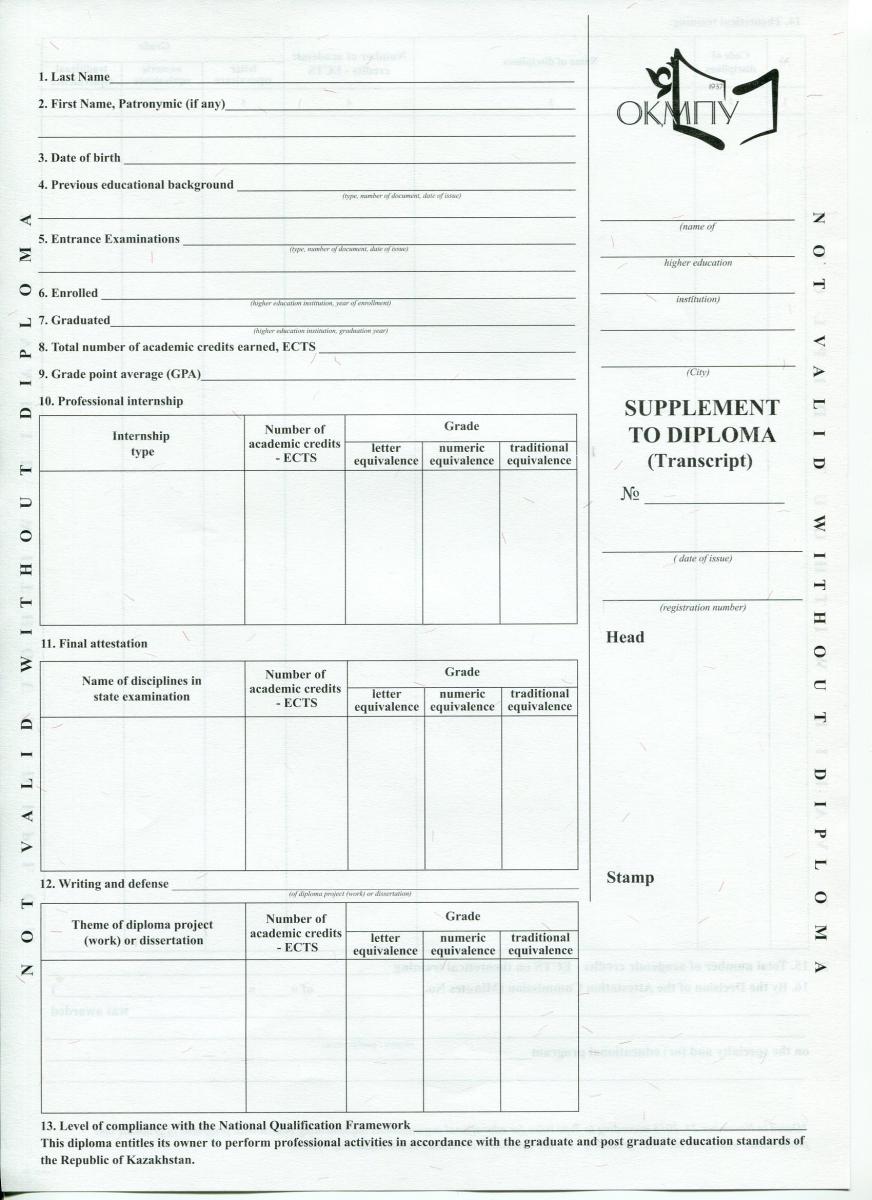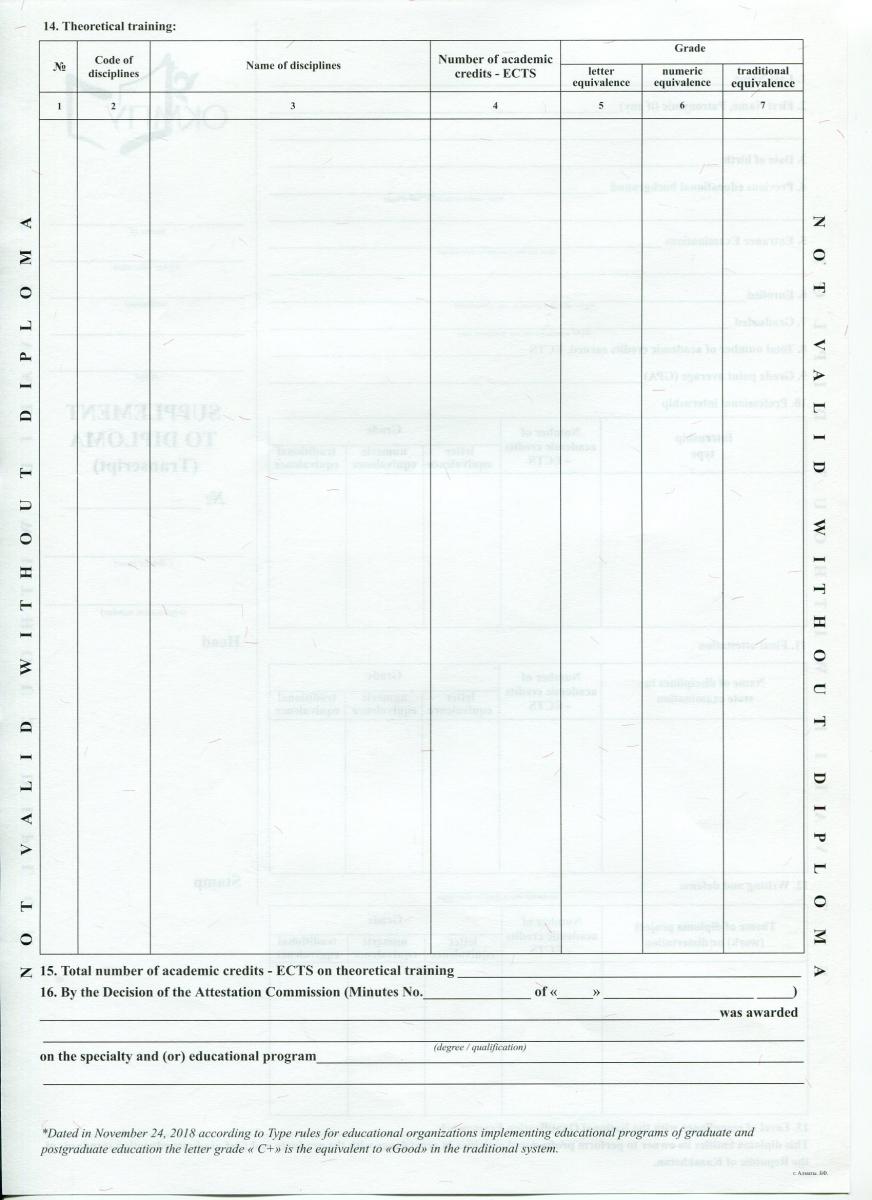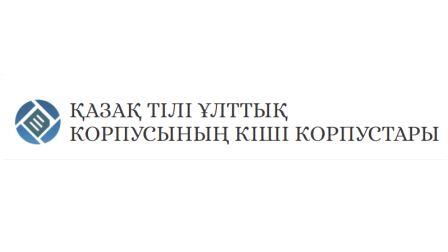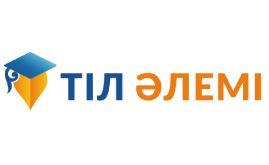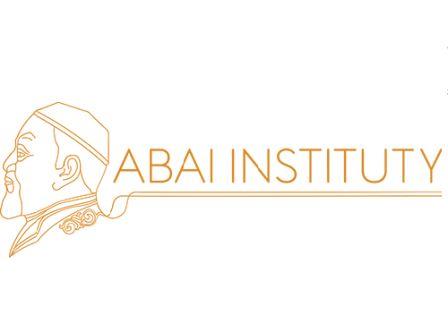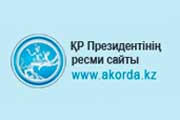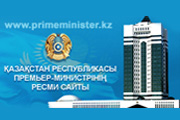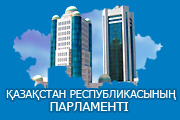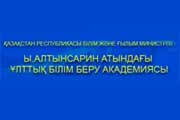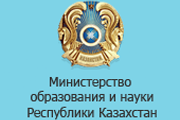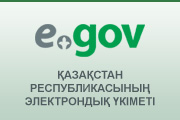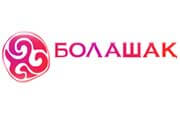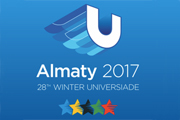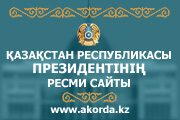Forms of one’s own diplomas
One’s own educational documents ofhave the status of a “strict reporting form” and their production is carried out using special protected materials, which prevents false documents production, and in case of detection – a guaranteed definition of such a falsification.
A document of one’s own consists of:
1) hardcover size 300 x 210 mm;
2) insert size 300x 210 mm;
3) applications
The cover of the document is made:
1) for a diploma with honours — red colour;
2) for other documents — dark blue colour.
On the cover of the document there are placed:
1) stamped inscription on the top in the state language: “Kazakhstan Republikasy”,
2) the logo and the name of NCJSC “Rudny Industrial Institute” in the form of embossment,
3) under the image of the logo, there is aname of the type of document embossed in the state language.
Bachelor’s degree template
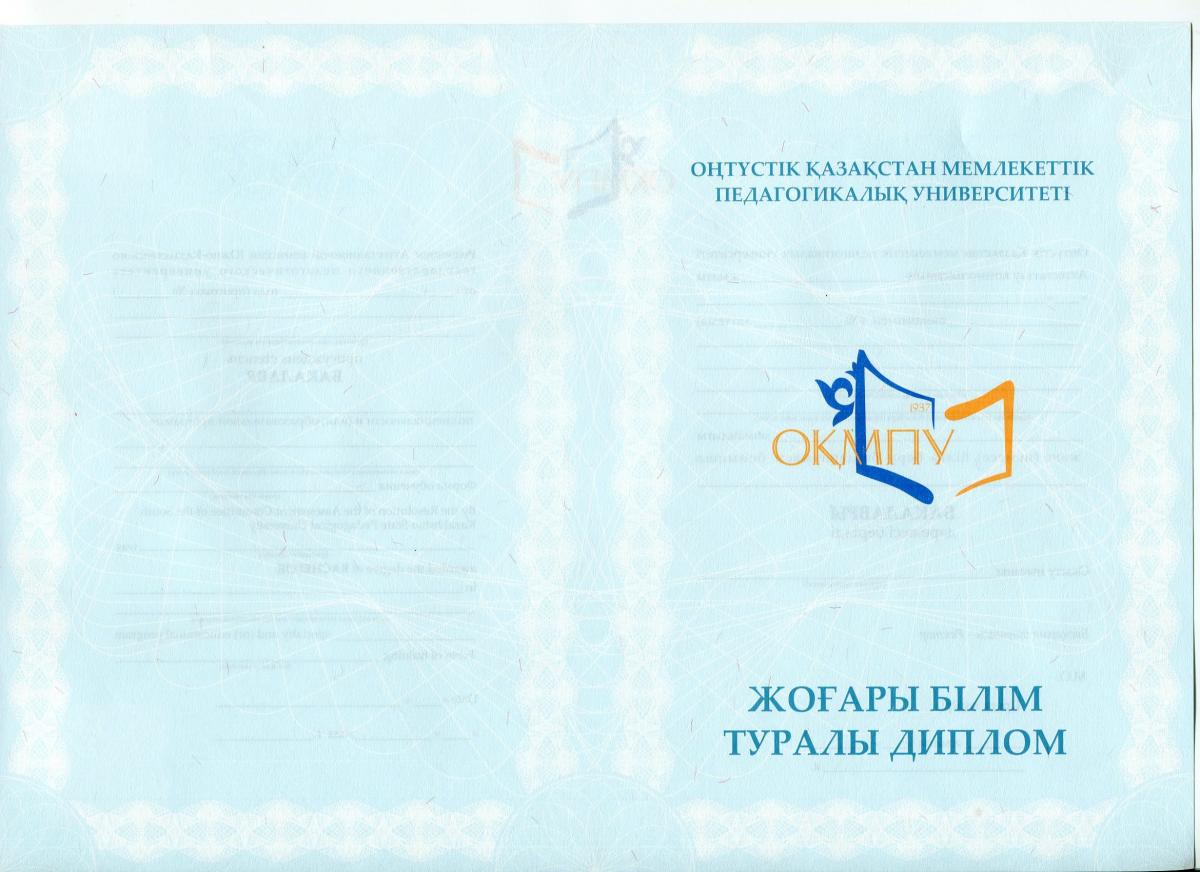
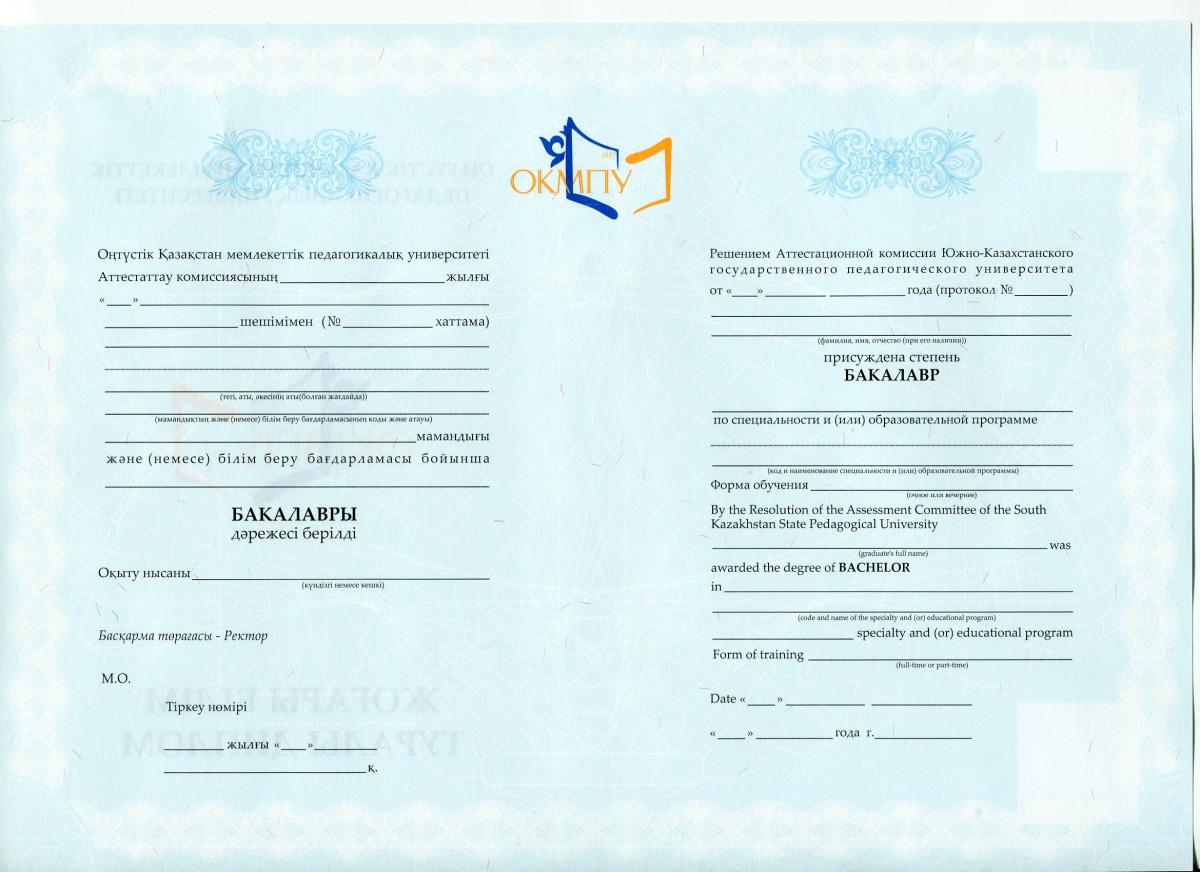
Layout of the Bachelor’s degree with honors
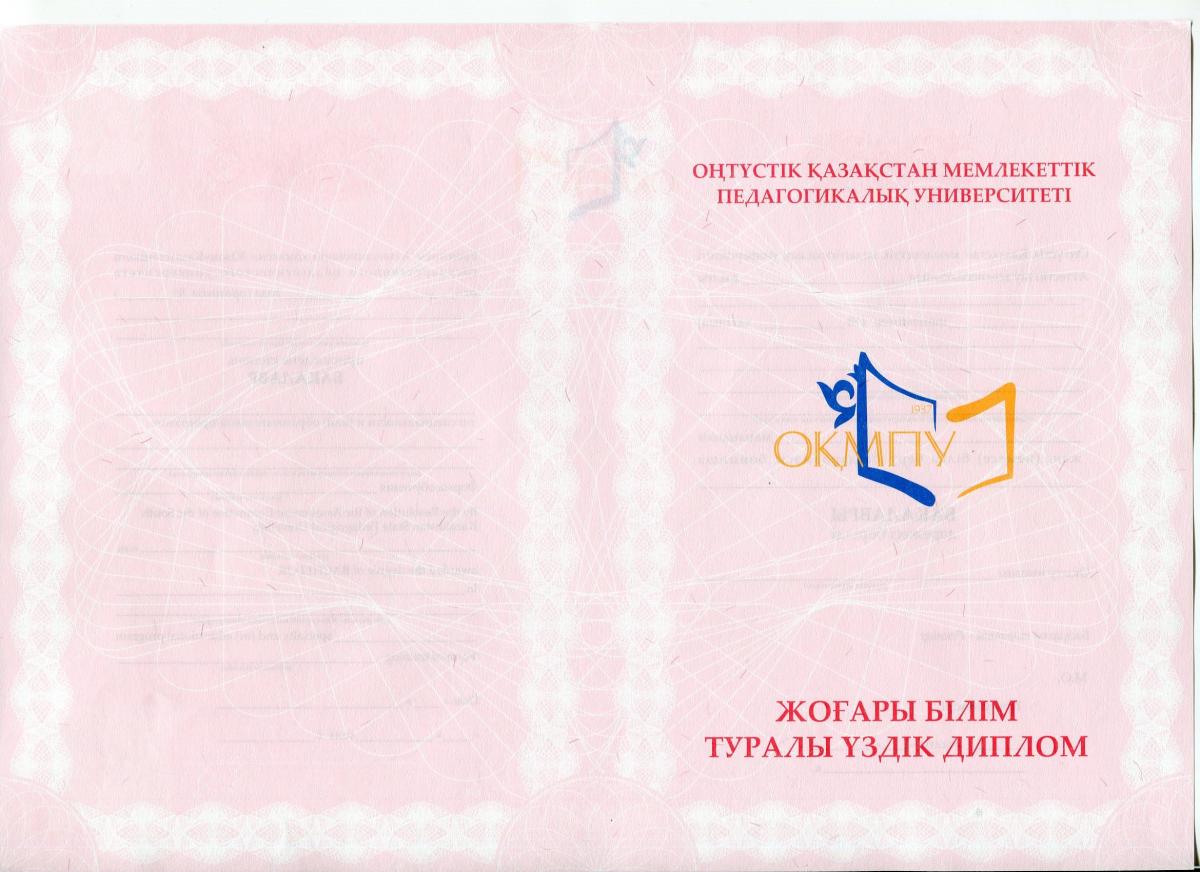
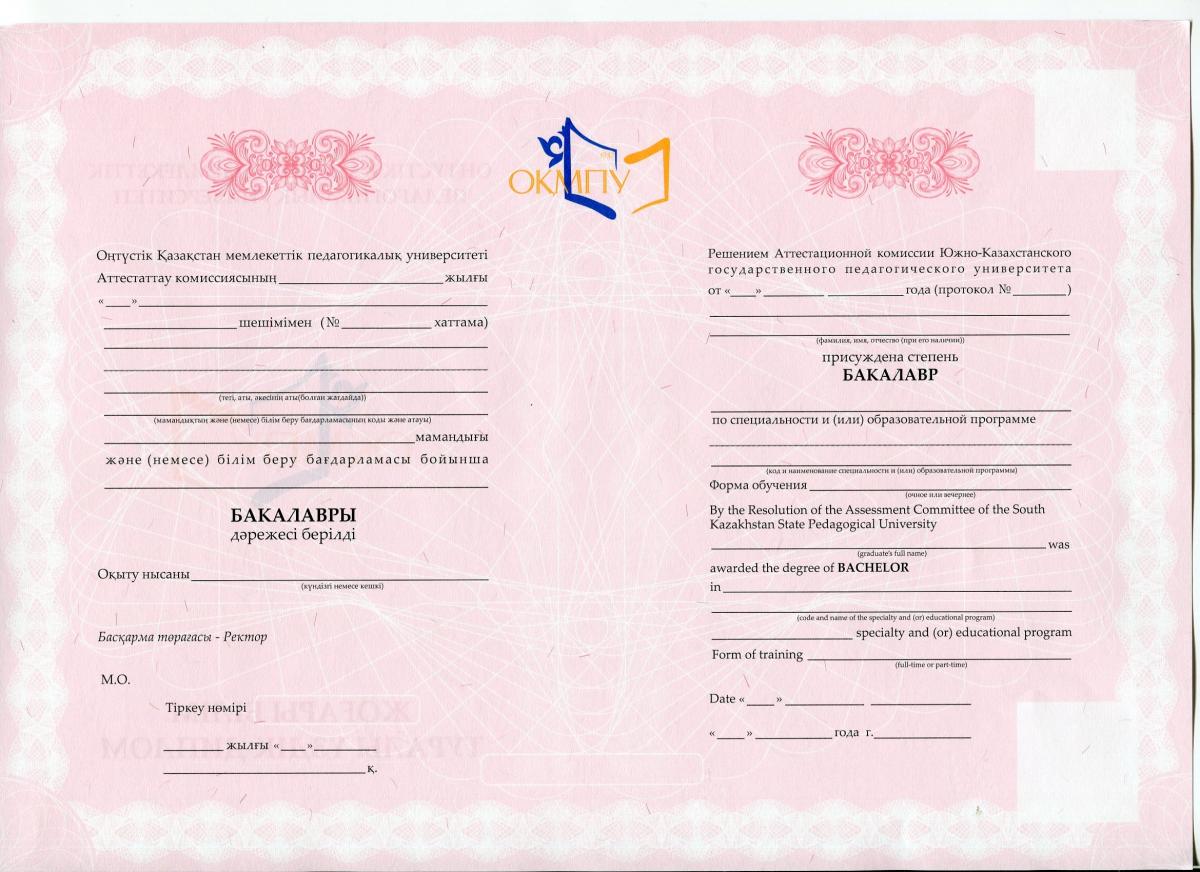
Master’s degree template


The forms of inserts and applications are printed on special paper with degrees of protection (with watermarks)
On the left inner side of the document of higher education in bachelor and master degrees the content is in the state language, and on the right side there is identical content in Russian and English.
On both inner sides of the insert of the diploma with honors, the words “Uzdik” and “with honours” are printed in red in a typographic way, for diplomas of higher education, the word “Uzdik” is printed on the front side of the inserts.
Inserts of all types of documents have series and seven-digit numbers.
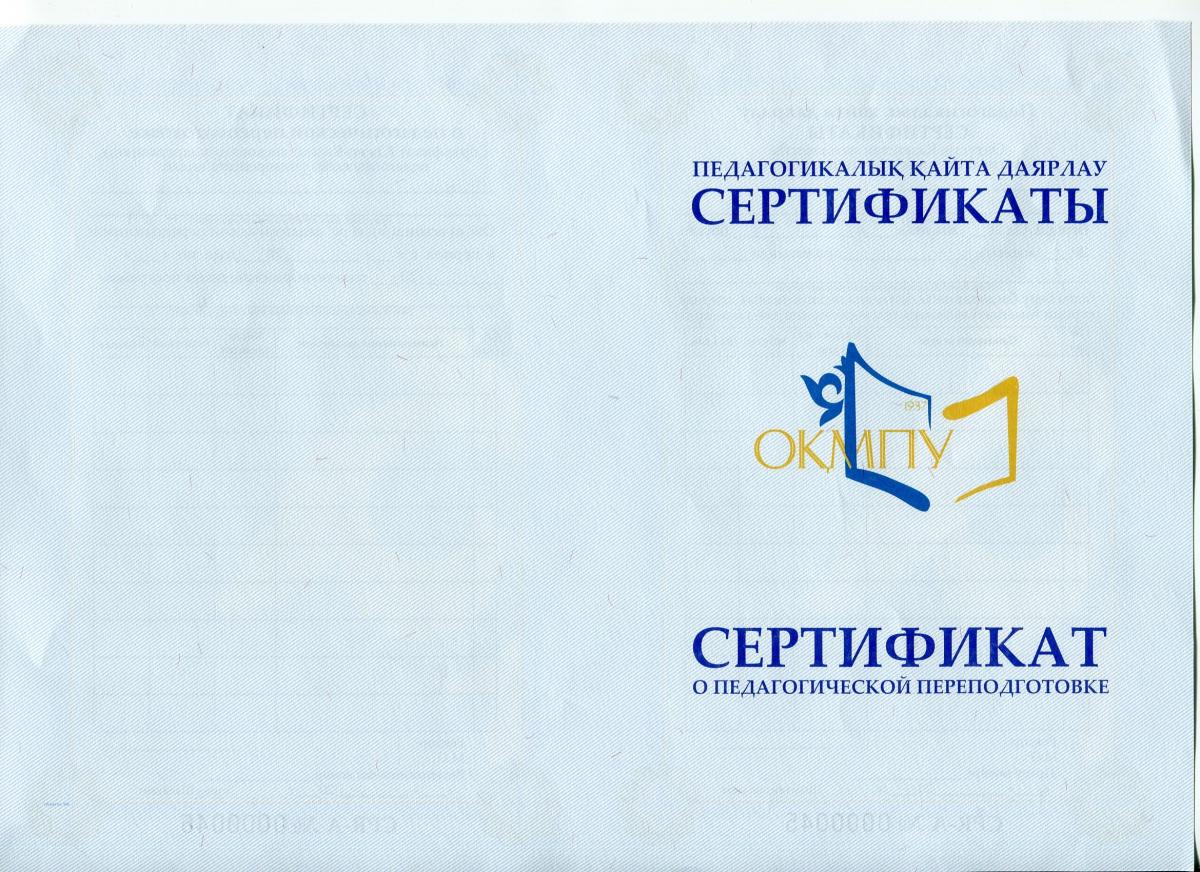
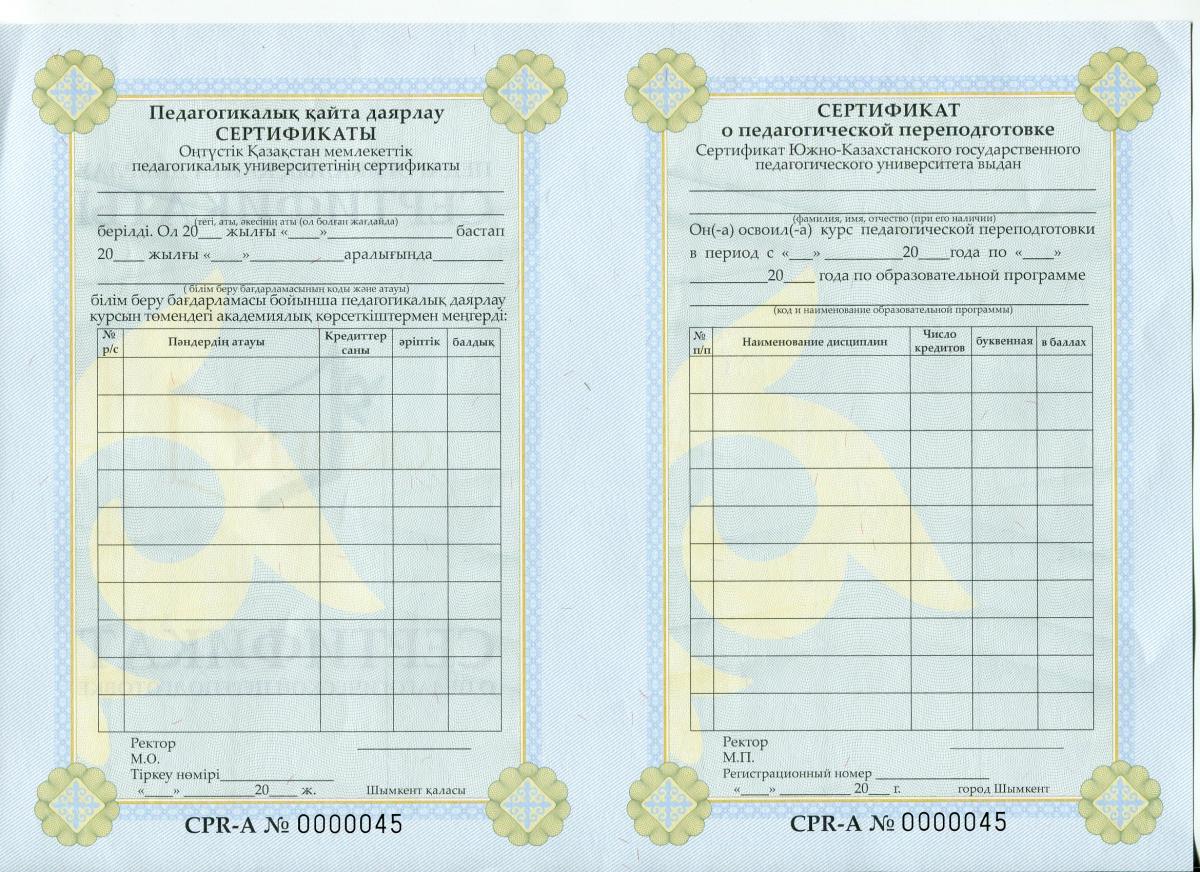
The forms of inserts, appendices to one’s own educational documents are printed in a typographic way (without taking into account the data that is filled in manually or using printing devices).
The forms of inserts, appendices to one’s own educational documents contain:
1) name of the university;
2) last name, first name, patronymic (if any) of the graduate;
3) the code and name of the educational program (specialty);
4) degree awarded (if any);
5) date and number of the minutes of the meeting of the attestation commission on awarding the degree (if any);
6) the form of training;
7) signature of the head of the university;
8) serial registration number;
9) date and place (city) of issue;
10) the seal of the university.
The forms of inserts, are printed on special paper with degrees of protection.
Educational documents have the following series:
1) diploma of higher education with the award of bachelor’s degree-BA;
2) diploma of postgraduate education with the award of master’s degree-MA;
The forms of the inserts are filled in in two languages as follows:
1) surname, first name and patronymic (if any) of the person who has completed the training are prescribed in full in accordance with the entry in the identity document (or its replacement document);
2) surname, first name and patronymic (if any) of a foreign citizen are recorded according to the data of the national passport in the Russian-language transcription. Transcription must be agreed with the person who graduated from the educational institution;
3) in the line “full name of the educational organization”, the official name of the educational institution is indicated;
4) date and number of the protocol of the attestation commission are indicated;
5) in the line “degree/qualification awarded” – the name of the degree/qualification awarded;
6) in the lines “code and name of the specialty and (or) educational program”, the code, name of the specialty and (or) educational program is indicated;
7) in the line “form of training”, the form of training is indicated.
When students master more than 50 % of the disciplines of educational programs using distance learning technologies, the corresponding form of training is indicated in the line “form of training” ;
8)the form indicates series and number of the issued diploma, the city where the educational organization is located, the date of issue of the form: the number (digit), month (in words) and year(four-digit), the registration number of the form according to the Appendices to one’s own educational documents in two languages are filled in as follows:
1) surname, first name, patronymic (if any) are indicated in full;
2) name of the disciplines, the number of academic credits – ECTS. Rating (in letter equivalent, in points and traditional (in words));
3) in the line “Final certification”, name, the number of academic credits – ECTS and the score (in alphabetic equivalent, in points and traditional (in words)) are indicated. If a comprehensive exam is passed, then the name of the disciplines included in the comprehensive exam is indicated and one grade is given;
4) after the words “Previous document on education”, the name of the document on education on the basis of which this person was enrolled in EPHPE, the number of the document and the year of its issuance are indicated. If the previous document on education was obtained abroad, its name is indicated in translation into Kazakh, Russian and English and the name of the country in which this document was issued;
5) after the words “Entered in “and” Completed training in”, four-digit numbers are indicated, respectively, the year of admission and the year of graduation, as well as the full name of the educational institution that this person entered, and the name of EPHPEthat this person graduated from. Other EPHPE, in which the student could also study, are not specified. If the student after admission to EPHPEbegan training and(or) completed training in the branch of EPHPE, then after the name of EPHPE, separated by a comma, the name of the branch is indicated. Other EPHPE, in which the student could also study, are not specified;
6) in the line “Total number of academic credits mastered-ECTS” – the number of credits is indicated in numbers;
7) in the line “Grade point average (GPA) of training” – the average score for the entire training period is indicated in numbers;
8) in the line “Professional training”, the name, the number of academic credits – ECTS and the score (in alphabetic equivalent, in points and traditional (in words))are indicated;
9) in the line “Number of credits of theoretical training” and “number of ECTS credits of theoretical training” – the number of credits of theoretical training is indicated by numbers;
10) in the line “By the decision of the attestation commission”, the number of the protocol and the date are indicated in numbers;
11) the degree/qualification is indicated in the line ” Awarded (assigned)”;
12) in the line “By specialty and (or) educational program”, the code and name of the specialty and (or) educational program are indicated;
13) in the line “The level of compliance with the national qualification framework”, the level is indicated by numbers: for bachelor’s degree-6, for master’s degree-7
14) in the line “Execution and defense”, the words “on the topic” are entered, and for masters – “master’s thesis on the topic”, the topic of the final work in quotation marks, the number of credits established for the completion of the final work and the assessment (in words).
